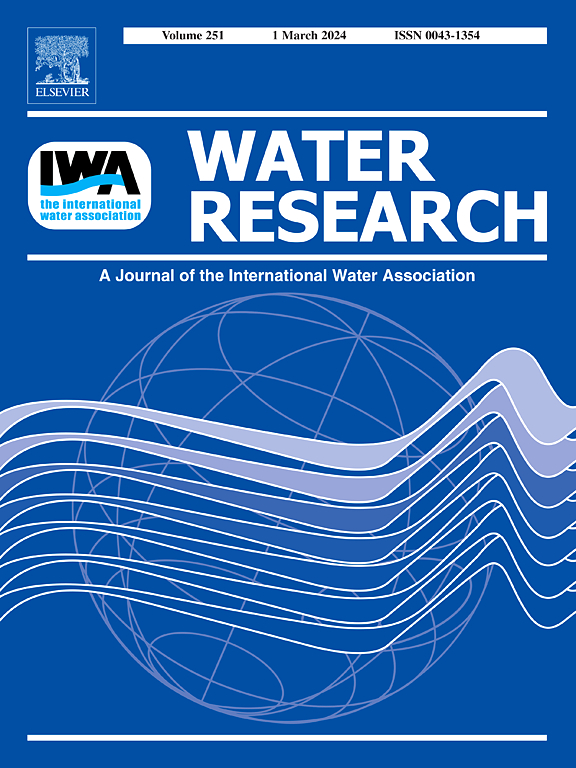How do varying nitrogen fertilization rates affect crop yields and riverine N2O emissions? A hybrid modeling study
IF 11.4
1区 环境科学与生态学
Q1 ENGINEERING, ENVIRONMENTAL
引用次数: 0
Abstract
Headwater streams in agricultural areas constitute significant sources of nitrous oxide (N2O) due to nutrient enrichment; however, their emissions are often overlooked in current environmental impact assessments. This scarcity highlights the importance of developing advanced decision tools to evaluate these contributions and create effective mitigation strategies. Our study establishes the first integrated modeling framework that combines a process-based model SWAT+ with a linear mixed model (LMM) to predict N2O emissions from a headwater agricultural river system in Belgium under diverse climate change and fertilization scenarios. In particular, the calibrated and validated SWAT+ model was used to simulate streamflow, nutrient transport, and crop yields under these scenarios, from which, together with biochemical data collected from sampling campaigns, riverine N2O emissions were predicted via LMM. Our results revealed hydrologically driven patterns in riverine N2O emissions, with peak emissions in winter and spring, driven by precipitations enhancing shallow subsurface flows, carrying leached nutrients from fields to the river, and fueling N2O emissions. These phenomena were intensified under climate change scenarios, especially during combined wetter and hotter winters and springs, which elevated headwater N2O emissions by 40%. Moreover, when coupling these conditions with a 20% increase in fertilizer rates, riverine N2O emissions would be boosted by 83%. These findings underscore the importance of integrating land-surface and river processes, to effectively quantify the feedback loop between river nutrient enrichment and climate change under the influence of agricultural practices, and to support comprehensive mitigation strategies under the warming climate.求助全文
约1分钟内获得全文
求助全文
来源期刊

Water Research
环境科学-工程:环境
CiteScore
20.80
自引率
9.40%
发文量
1307
审稿时长
38 days
期刊介绍:
Water Research, along with its open access companion journal Water Research X, serves as a platform for publishing original research papers covering various aspects of the science and technology related to the anthropogenic water cycle, water quality, and its management worldwide. The audience targeted by the journal comprises biologists, chemical engineers, chemists, civil engineers, environmental engineers, limnologists, and microbiologists. The scope of the journal include:
•Treatment processes for water and wastewaters (municipal, agricultural, industrial, and on-site treatment), including resource recovery and residuals management;
•Urban hydrology including sewer systems, stormwater management, and green infrastructure;
•Drinking water treatment and distribution;
•Potable and non-potable water reuse;
•Sanitation, public health, and risk assessment;
•Anaerobic digestion, solid and hazardous waste management, including source characterization and the effects and control of leachates and gaseous emissions;
•Contaminants (chemical, microbial, anthropogenic particles such as nanoparticles or microplastics) and related water quality sensing, monitoring, fate, and assessment;
•Anthropogenic impacts on inland, tidal, coastal and urban waters, focusing on surface and ground waters, and point and non-point sources of pollution;
•Environmental restoration, linked to surface water, groundwater and groundwater remediation;
•Analysis of the interfaces between sediments and water, and between water and atmosphere, focusing specifically on anthropogenic impacts;
•Mathematical modelling, systems analysis, machine learning, and beneficial use of big data related to the anthropogenic water cycle;
•Socio-economic, policy, and regulations studies.
 求助内容:
求助内容: 应助结果提醒方式:
应助结果提醒方式:


